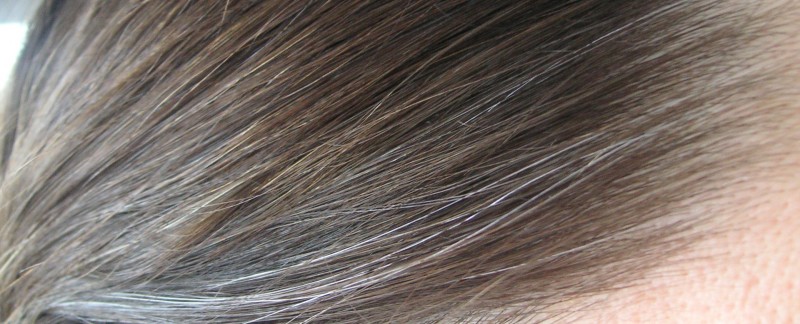The hair pull test is a simple diagnostic test in which the physician lightly pulls a small amount of hair (approx 100 simultaneously) in order to determine if there is excessive loss. Normal range is one to three hairs per pull.
The hair pull test is, in essence, very simple. A dermatologist takes a few strands between their thumb and forefinger and pulls on them gently. Anagen, growing hairs should remain rooted in place while hairs in telogen should come out easily. By knowing how many hairs were pulled and the number that came out, you can roughly work out the percentage of hair follicles in a telogen state. So if you pull on 20 hairs and 2 come out, then the frequency of telogen hair follicles is 10%. As a (very) rough guide, a 10% telogen frequency is excellent, up to 25% is typical, over 35% is a potential problem.
However, although the hair pull test seems simple in principle, it contains many potential pitfalls and the wrong conclusions can be drawn if the test is not properly conducted or the limitations fully understood.
1) The most basic problem with the hair pull test is that the results can vary depending on what the patient did with their hair in the preceding hours. If the patient washed their hair this will remove many of the telogen hairs. The washing process helps massage telogen hairs out of the follicular canal. If the patient is subjected to a hair pull test a few hours later the result will be a false negative one. For this reason, if you see a dermatologist about hair loss, you should not wash your hair in the preceding 24 hours.
2) The frequency of telogen shedding varies from day to day. So you might have a positive hair pull test result on the day of the consultation, but a few days later the pull test might be negative – and conversely you might have a negative test on the consultation day but a positive one a few days later. Ideally, to get a more accurate picture of shedding, the hair pull test has should be done each day for a week, or even longer, and an average of the daily results calculated to even out the day to day variability. Of course a dermatologist will not see you each day for a week, so the hair pull test done during a consultation only gives a limited snap shot in time.
3) Hair pull testing may also show an increase in shedding in spring and fall as these are natural high shed seasons. The dermatologist, and you, should take this into account when interpreting the results.
4) The results of a hair pull test may vary over the scalp, so more telogen hairs may be pulled out on top than at the sides for example. To get a global picture, the hair pull test needs to be done a few times in different locations.
5) Finally, the hair pull test also needs to be put into context. Hair pull tests will vary from person to person as some people can be naturally high shedders, but these people may also be rapid hair growers so they have no net hair loss. Equally it is possible to have a development of alopecia not from an increase in shedding, but rather a failure of new anagen hairs to grow after telogen hairs have been naturally shed. In this instance, the telogen hair follicle frequency is normal, but the scalp hairs gets gradually, progressively thinner. Overall then, the hair pull test provides some information, but it is of limited value on its own. The results of the hair pull test must be put into context with other information.
There are things that can be done to help improve the accuracy of the basic hair pull test, but they add time and therefore money, so more detailed investigations are not commonly done. The hair pull test can be taken a stage further and developed into the “unit area trichogram”. In this procedure, a few hair samples are plucked from the scalp using rubber tipped forceps – both the anagen and telogen hairs are taken. These can be laid out on a glass slide and examined under a microscope. The dermatologist then counts the number of anagen hairs and the number of telogen hairs.
The dermatologist may take the anagen/telogen hair fiber count even further and measure the diameter of the hair fibers, and look for intermediate (unusually thin and or short) hair fibers. The average healthy hair fiber diameter is 80 micrometers or over. In terms of meaningful hair coverage, hair fibers need to have a diameter of at least 40 micrometers. Below 40 micrometers the hair fibers are too thin to have much meaningful impact on scalp coverage. To add even more information, the area of scalp from which the hair fibers were plucked may be measured. In this way the hair fiber examination results can be stated in terms of hair density on the scalp.
